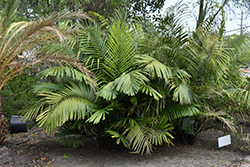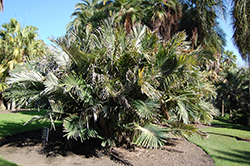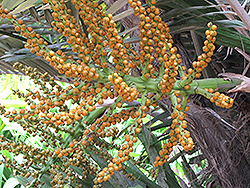Fri & Sat 8am - 8pm
Sun 8am - 7pm
Anytown, USA 12345
fax: 261.787.0463
e-mail: info@successgc.com


Plant Finder

Height: 10 feet
Spread: 16 feet
Sunlight:
![]()
![]()
Hardiness Zone: 8b
Other Names: Dwarf Sugar Palm, Taiwan Arenga Palm
Description:
A dwarf clustering palm that is dense and compact; glossy, dark green fronds with graceful fishtail shaped leaflets; sensitive to poor drainage; best to plant in a protected understory; an impressive landscape accent
Ornamental Features
Formosa Palm features showy spikes of fragrant orange flowers with red overtones held atop the branches from late winter to early spring. It has attractive dark green foliage with silver undersides. The twisted narrow pinnately compound leaves are highly ornamental and remain dark green throughout the winter. The red fruits with deep purple variegation and which fade to brown over time are held in clusters from early to late summer.
Landscape Attributes
Formosa Palm is a multi-stemmed evergreen shrub with a towering form, with a high canopy of foliage concentrated at the top of the plant. Its relatively coarse texture can be used to stand it apart from other landscape plants with finer foliage.
This shrub will require occasional maintenance and upkeep, and should not require much pruning, except when necessary, such as to remove dieback. It is a good choice for attracting birds to your yard. Gardeners should be aware of the following characteristic(s) that may warrant special consideration;
- Insects
- Disease
Formosa Palm is recommended for the following landscape applications;
- Accent
- Mass Planting
- Hedges/Screening
Planting & Growing
Formosa Palm will grow to be about 10 feet tall at maturity, with a spread of 16 feet. It has a low canopy with a typical clearance of 2 feet from the ground, and is suitable for planting under power lines. It grows at a medium rate, and under ideal conditions can be expected to live for 60 years or more. This is a self-pollinating variety, so it doesn't require a second plant nearby to set fruit.
This shrub does best in partial shade to shade. It does best in average to evenly moist conditions, but will not tolerate standing water. It is not particular as to soil type or pH. It is somewhat tolerant of urban pollution. This species is not originally from North America, and parts of it are known to be toxic to humans and animals, so care should be exercised in planting it around children and pets.


